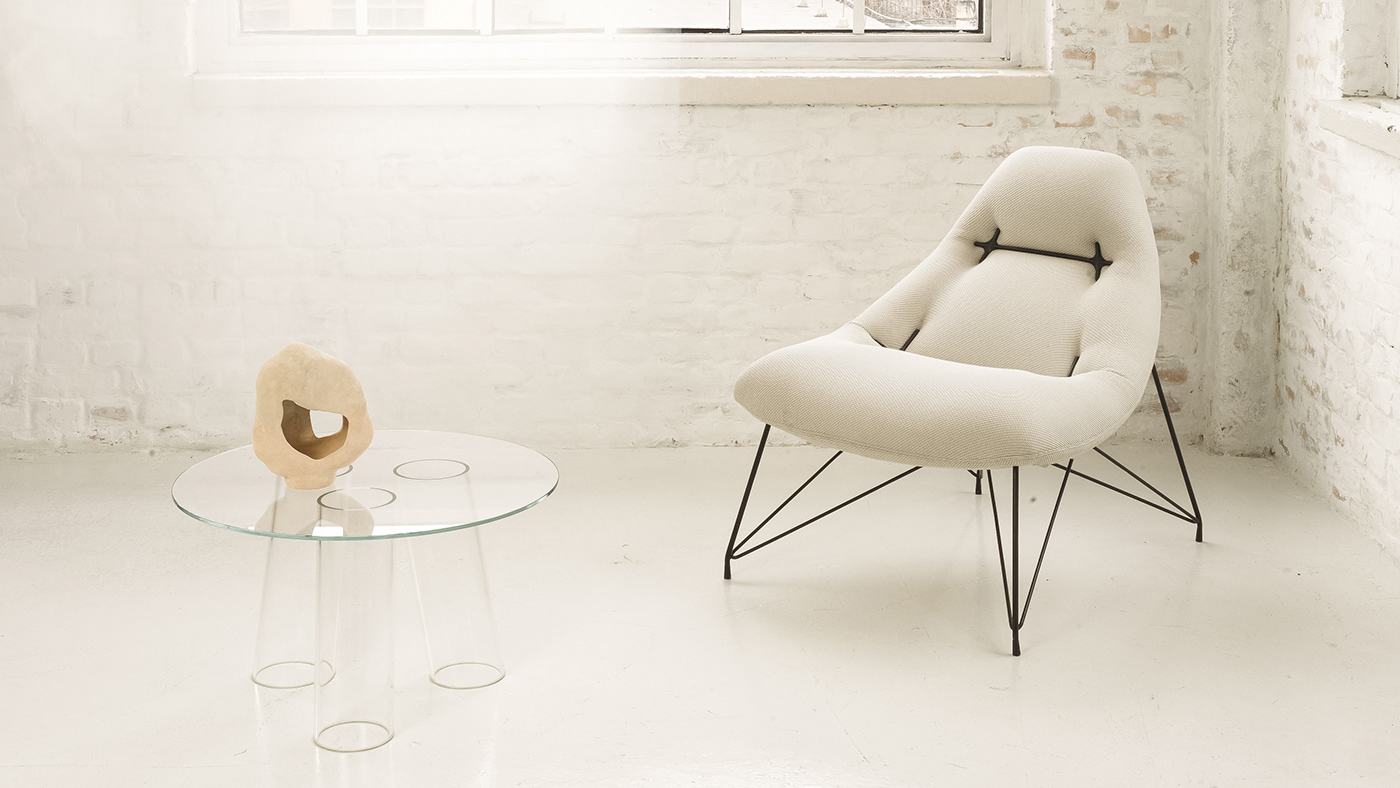
Photo: Milán Rácmolnár, Table design: Demeter Fogarasi, Ceramic design: Hora Design
Peach easy chair is the first member of my ongoing seating series, the Crosses. The motivation for designing this collection was to try a new mechanical joint solution that allows a new approach to shaping the comfort foam. Originally, in the upholstery furniture industry the comfort foam is shaped by cutting or casting it: the first one results in a lot of waste and has limits of shape, and the second one is extremely expensive and thus only suitable for high-volume production.
The new joint solution's point is that we have some external tools (metal elements are produced by additive technology) that distort and press the foam to reach its final shape. This method reduces waste and makes a mechanical connection among the components instead of gluing.
The idea is the analogy of the traditional "tufting" technique - just the foam is distorted along lines and more complex forms instead of points.
During the design process, I analyzed the original nature of a chair. In my previous works, I declared that a piece of furniture is a kind of "bridge" between the human and the space - and perhaps the chair is the best example of this statement. The seat (shell) of the chair is to include the human body - thus it should have an organic shape - and the legs connect this organic form with the space, the architecture - and they have a statical function. In the case of my chair, I was wondering about the different kinds of scales between the furniture and the human - I thought my chair can include different scaled disciplines - since it is upholstered, it includes some kind of textile designer approach (which is even more dependent of the human body) and through my metal element solution, I decided that I would like to make it as detailed as a piece of jewelry. I was looking for analogies in these different kind of creative fields: jewelry design, textile design, furniture design, and architecture. I was looking for solutions for the relation between a soft and a hard phenomenon - like metal ear cuffs and human ear, or like zippers and drapery. But one of my most important realizations was that my idea can be similar to the wall tie bars used in architecture (those iron elements have statical function and keeps the walls vertical). As a consequence, I decided to use these metal elements not just for distorting the foam, but to "tensioning" the chair's shell to the metal legs - thus they create the connection between them.
The reason why I call the series "Crosses" is this solution crosses these different fields between human and space, these elements go through the chair's shell, and because of their shape.
On the other hand, after I came up with the idea of this innovative tufting technique, I realized that from an emotional point of view, this tensioning gesture expresses the feeling of anxiety. Anxiety is the most determinative emotion in my life related to the last (at least) 1,5 years.
The new joint solution's point is that we have some external tools (metal elements are produced by additive technology) that distort and press the foam to reach its final shape. This method reduces waste and makes a mechanical connection among the components instead of gluing.
The idea is the analogy of the traditional "tufting" technique - just the foam is distorted along lines and more complex forms instead of points.
During the design process, I analyzed the original nature of a chair. In my previous works, I declared that a piece of furniture is a kind of "bridge" between the human and the space - and perhaps the chair is the best example of this statement. The seat (shell) of the chair is to include the human body - thus it should have an organic shape - and the legs connect this organic form with the space, the architecture - and they have a statical function. In the case of my chair, I was wondering about the different kinds of scales between the furniture and the human - I thought my chair can include different scaled disciplines - since it is upholstered, it includes some kind of textile designer approach (which is even more dependent of the human body) and through my metal element solution, I decided that I would like to make it as detailed as a piece of jewelry. I was looking for analogies in these different kind of creative fields: jewelry design, textile design, furniture design, and architecture. I was looking for solutions for the relation between a soft and a hard phenomenon - like metal ear cuffs and human ear, or like zippers and drapery. But one of my most important realizations was that my idea can be similar to the wall tie bars used in architecture (those iron elements have statical function and keeps the walls vertical). As a consequence, I decided to use these metal elements not just for distorting the foam, but to "tensioning" the chair's shell to the metal legs - thus they create the connection between them.
The reason why I call the series "Crosses" is this solution crosses these different fields between human and space, these elements go through the chair's shell, and because of their shape.
On the other hand, after I came up with the idea of this innovative tufting technique, I realized that from an emotional point of view, this tensioning gesture expresses the feeling of anxiety. Anxiety is the most determinative emotion in my life related to the last (at least) 1,5 years.
After I realized these chairs are also about anxiety, I decided to stand up for this statement - and I truly believe that not everything has to be about "well-being" even if it is a piece of furniture.
In the course of the 6-month long development, I strived to use the most sustainable method and technology for each element of the chair. The tufting steel metal parts are 3D printed ones (for the prototype). In the case of the black legs, the metal was room temperature browned and oiled (Rubio Monocoat) - instead of powder coating - because it is more sustainable and has a more sensual result. The stainless steel configuration's surface treatment was different kinds of abrasive technologies. The waffle structured fabric is a cradle-to-cradle certificated JAB Anstoetz Climatex product, with a really high Martindale value. The leather is from Sweden by ElmoLeather, and the brown one is a beautiful, flexible, and super soft Kvadrat fabric. Both of these Scandinavian brands have an ongoing transparent sustainability strategy that is available on their website.
The Peach's fluffy and juicy character evokes the early '70s Italian design - Sesann, Soriana, Camaleonda - but in a more modern, cloudy, and airy way.
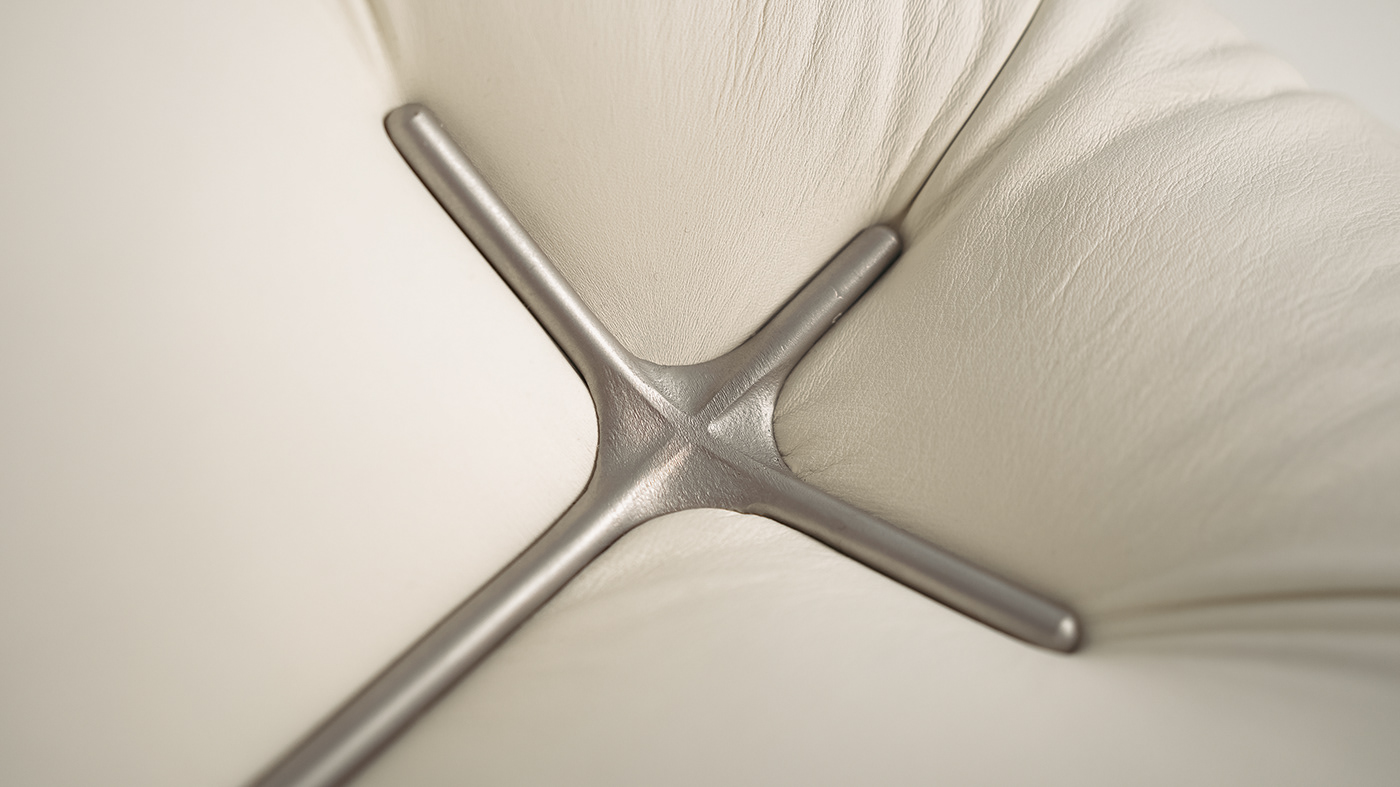
3D printed metal detail of the prototype - Photo: Milán Rácmolnár, HFDA



Traditional tufting, wall-tie bars, anxiety
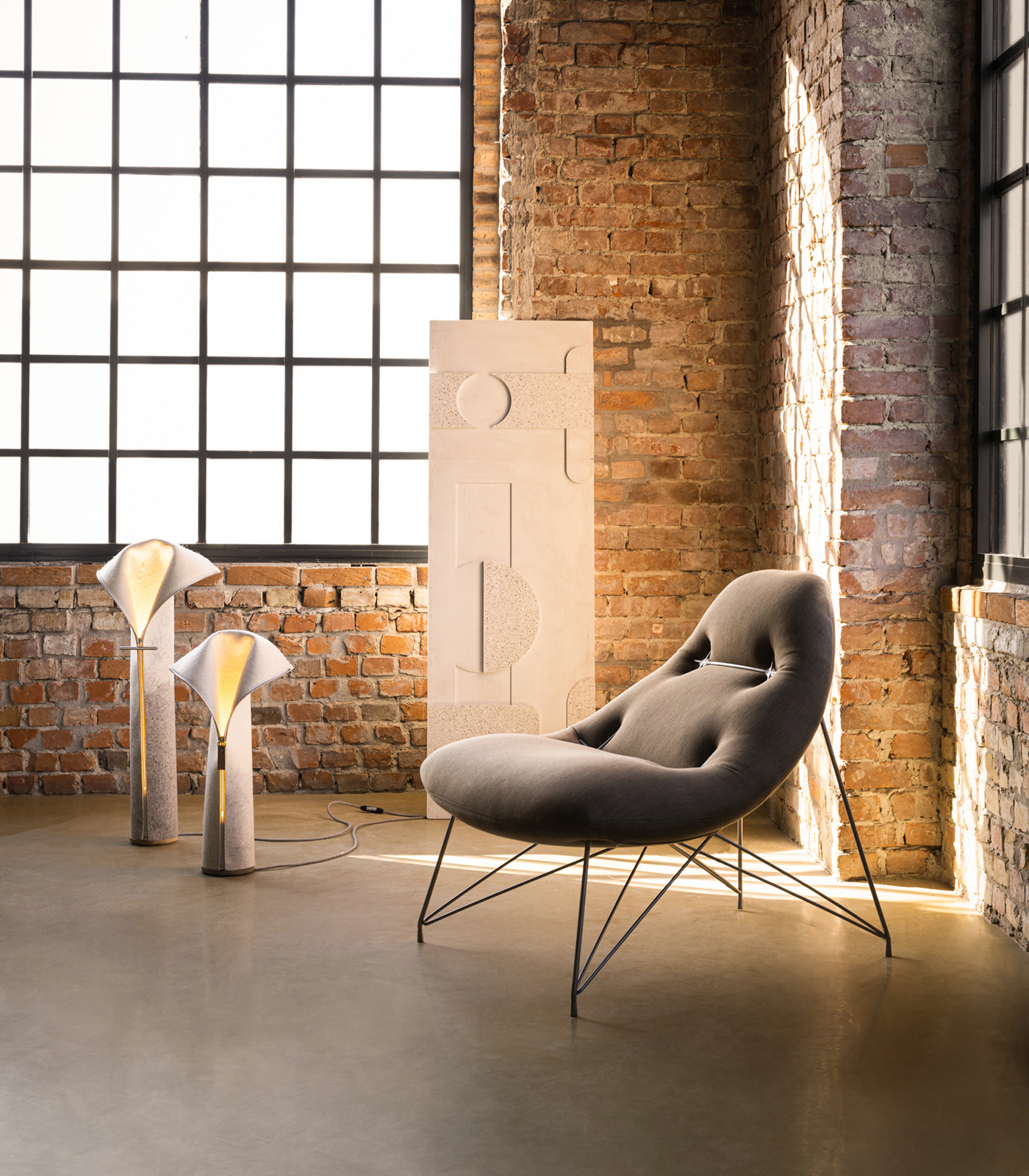
Photo: Kata Balogh, HFDA - Lamps: Márton Budai X Multifelt Factory, Concrete panel: Sara Kele X Anna Cserba X Concrazy
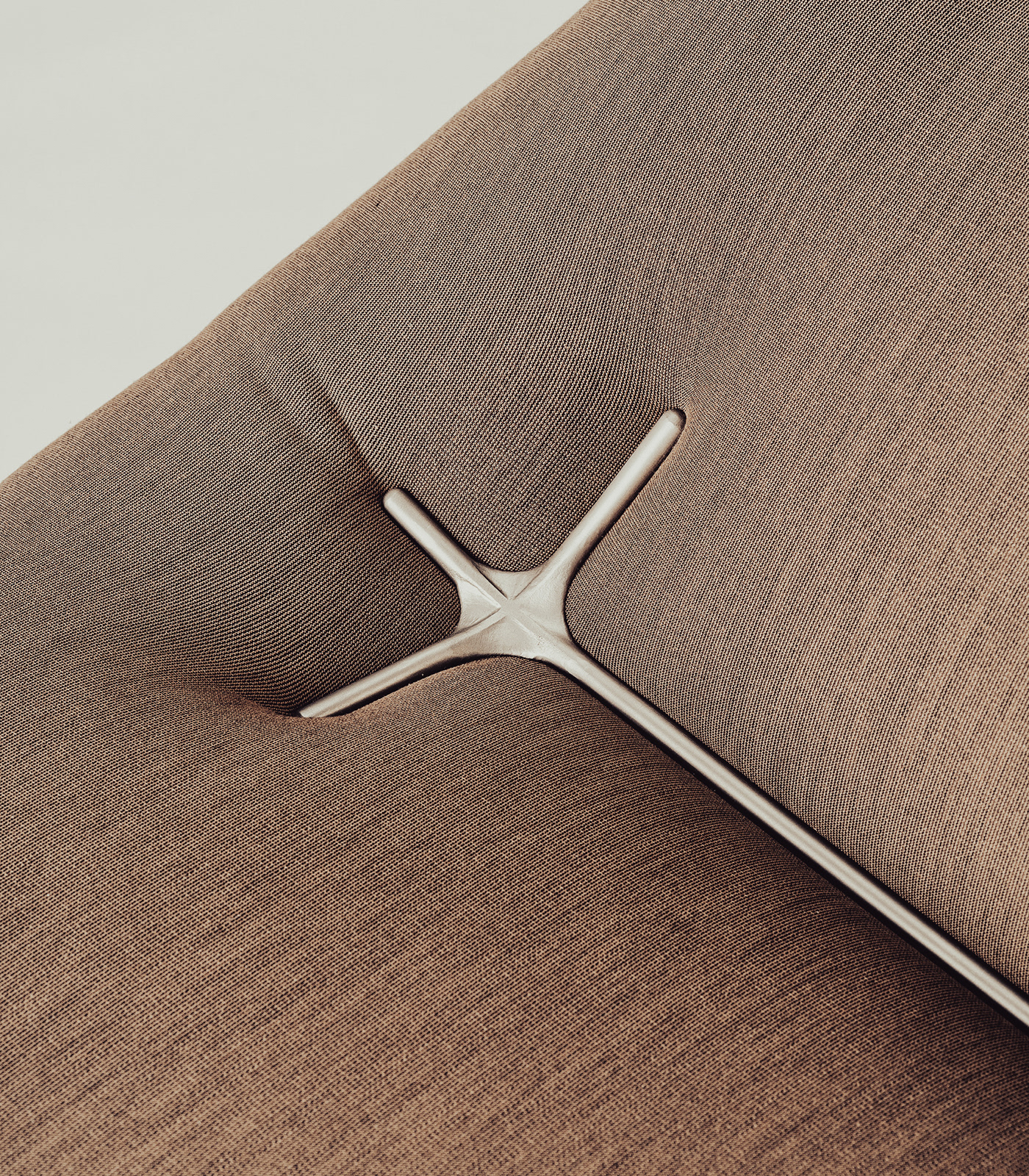
3D printed external metal tool is tensioning the comfort foam - Photo: Kata Balogh, HFDA


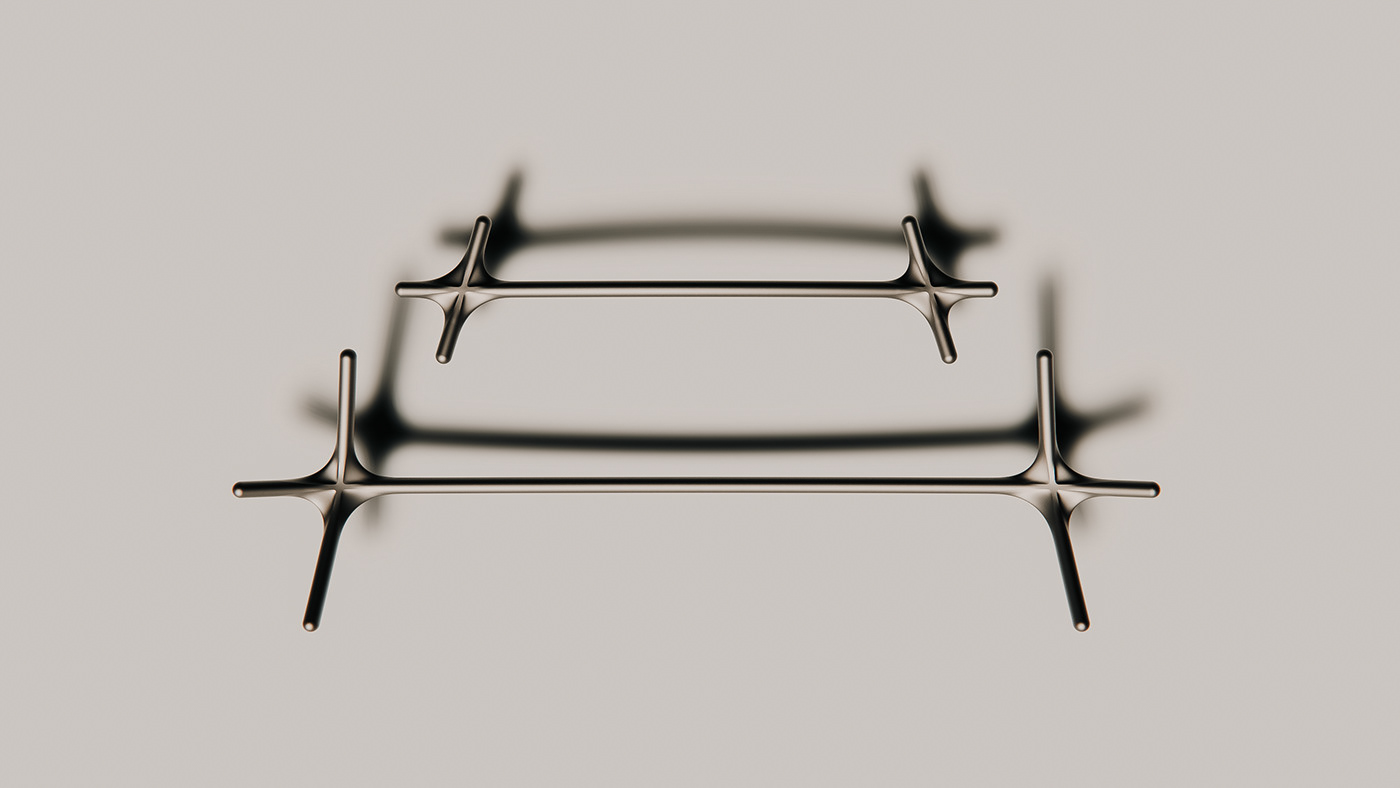
Tufting/ tensioning tools - without them, the chair's foam would be totally flat


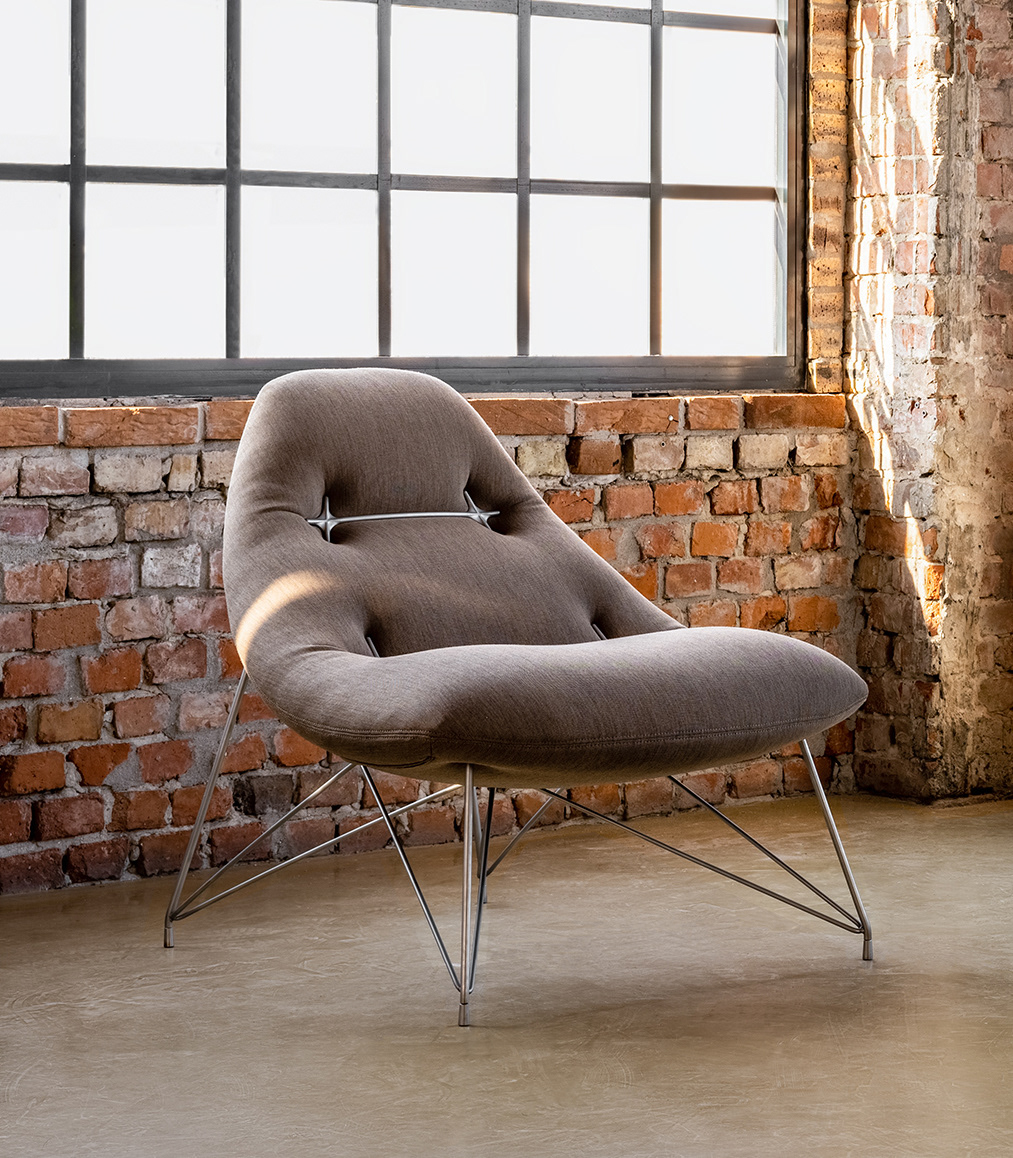
Photo: Kata Balogh, HFDA
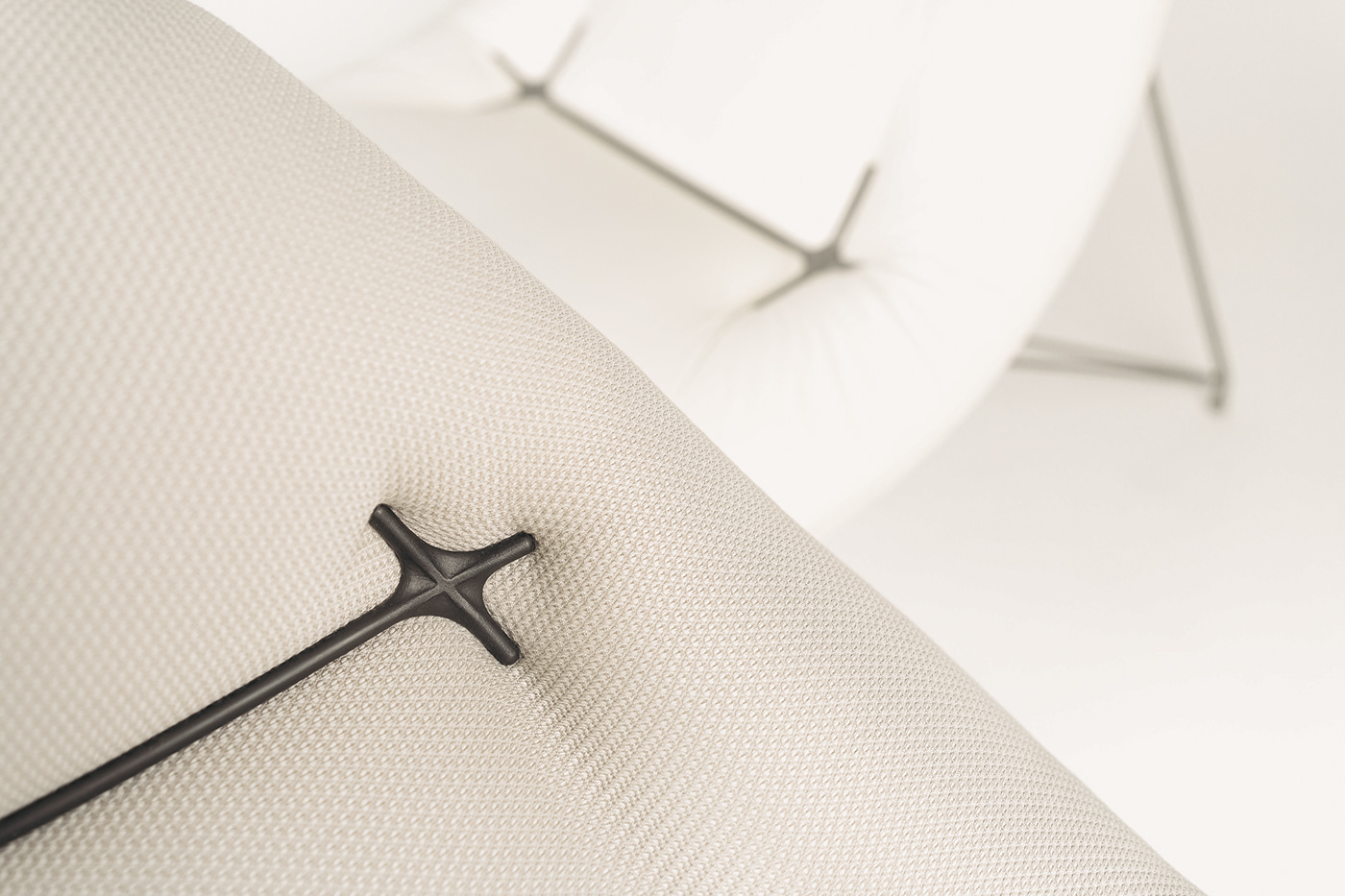
Photo: Milán Rácmolnár, HFDA
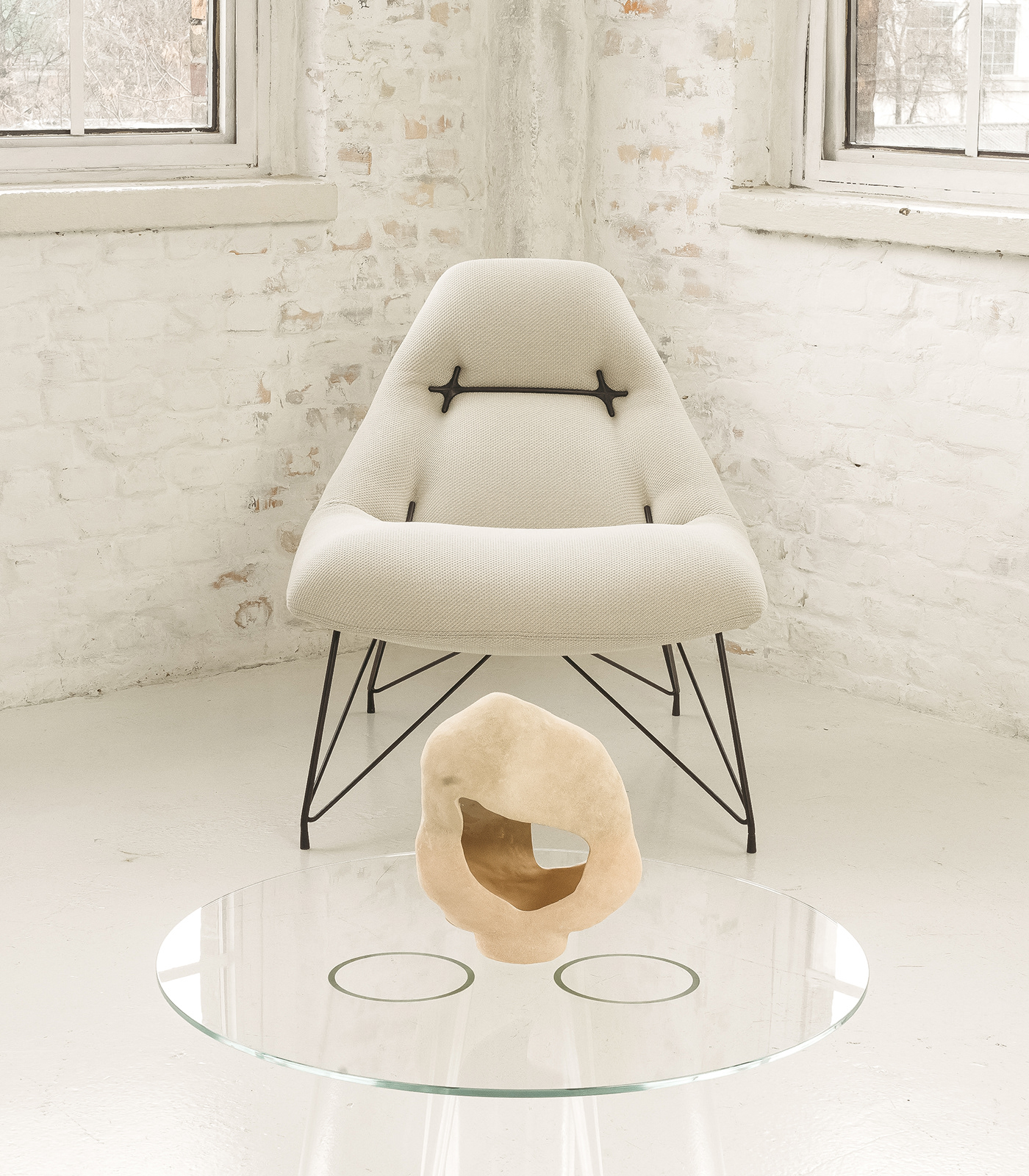
Photo: Milán Rácmolnár, Table design: Demeter Fogarasi, Ceramic design: Hora Design


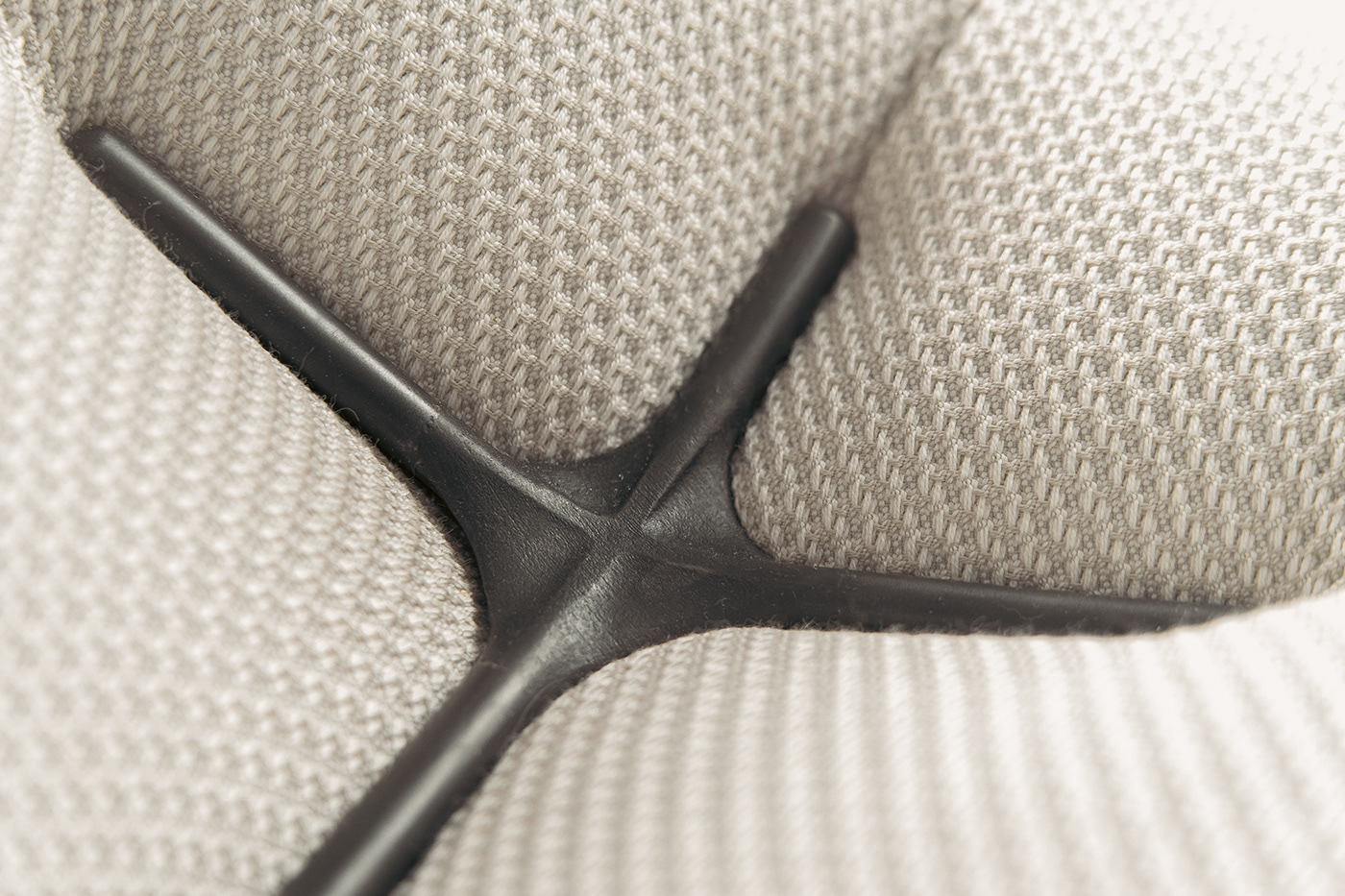
Photo: Milán Rácmolnár, HFDA


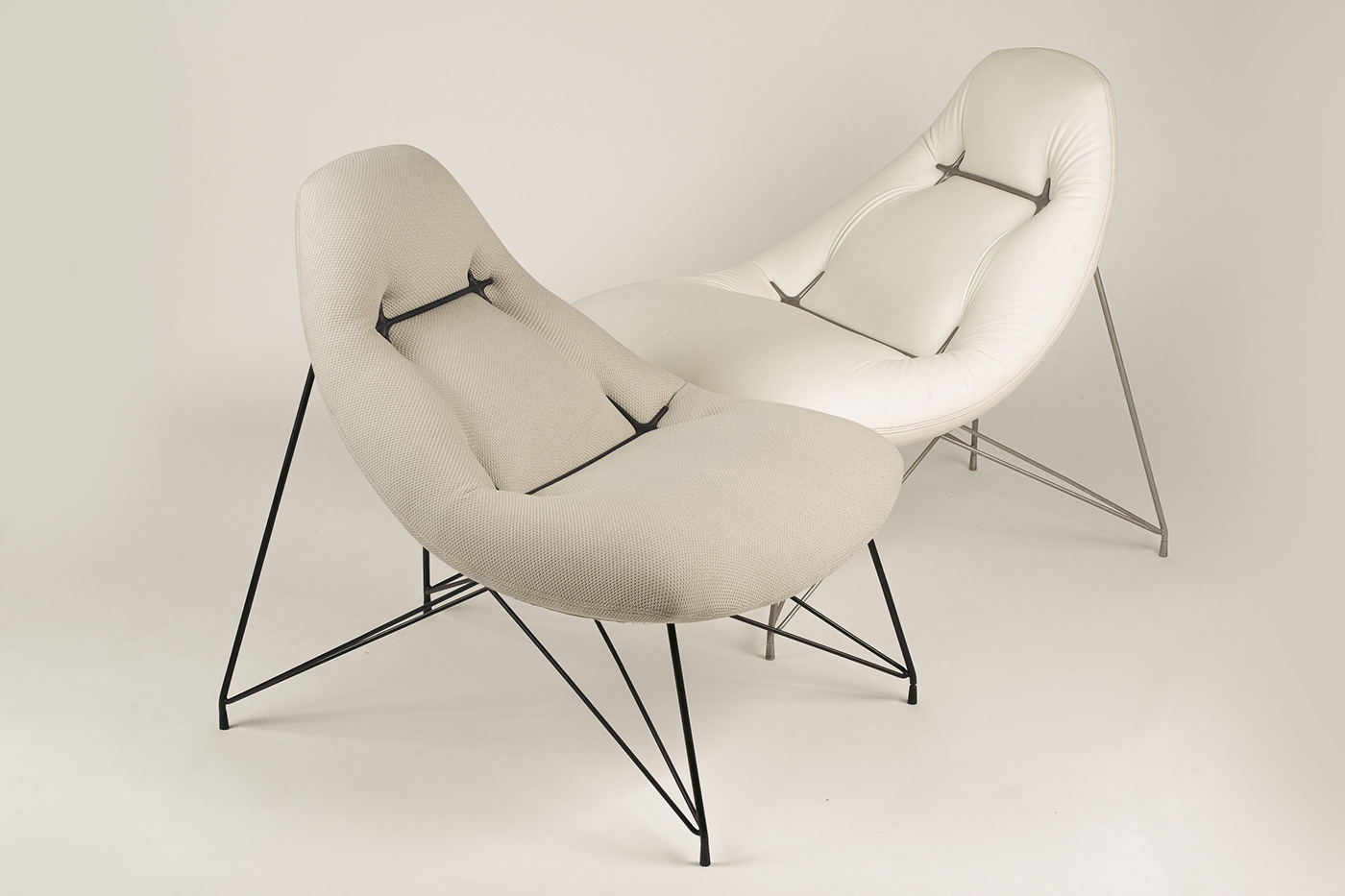
Photo: Milán Rácmolnár, HFDA




Photo: Milán Rácmolnár, HFDA
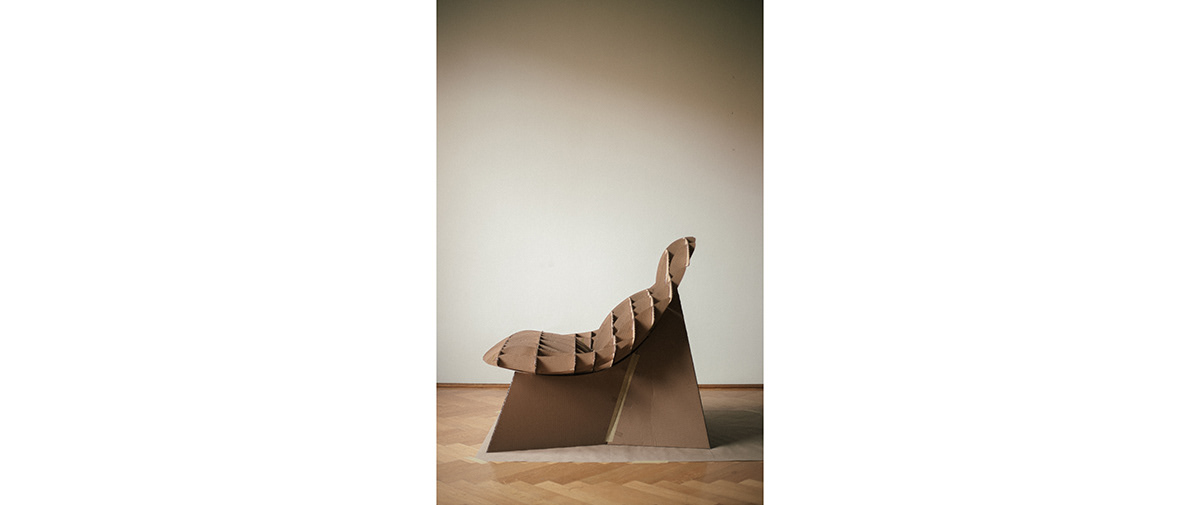
1:1 cardboard mockup
making the cardboard mockup











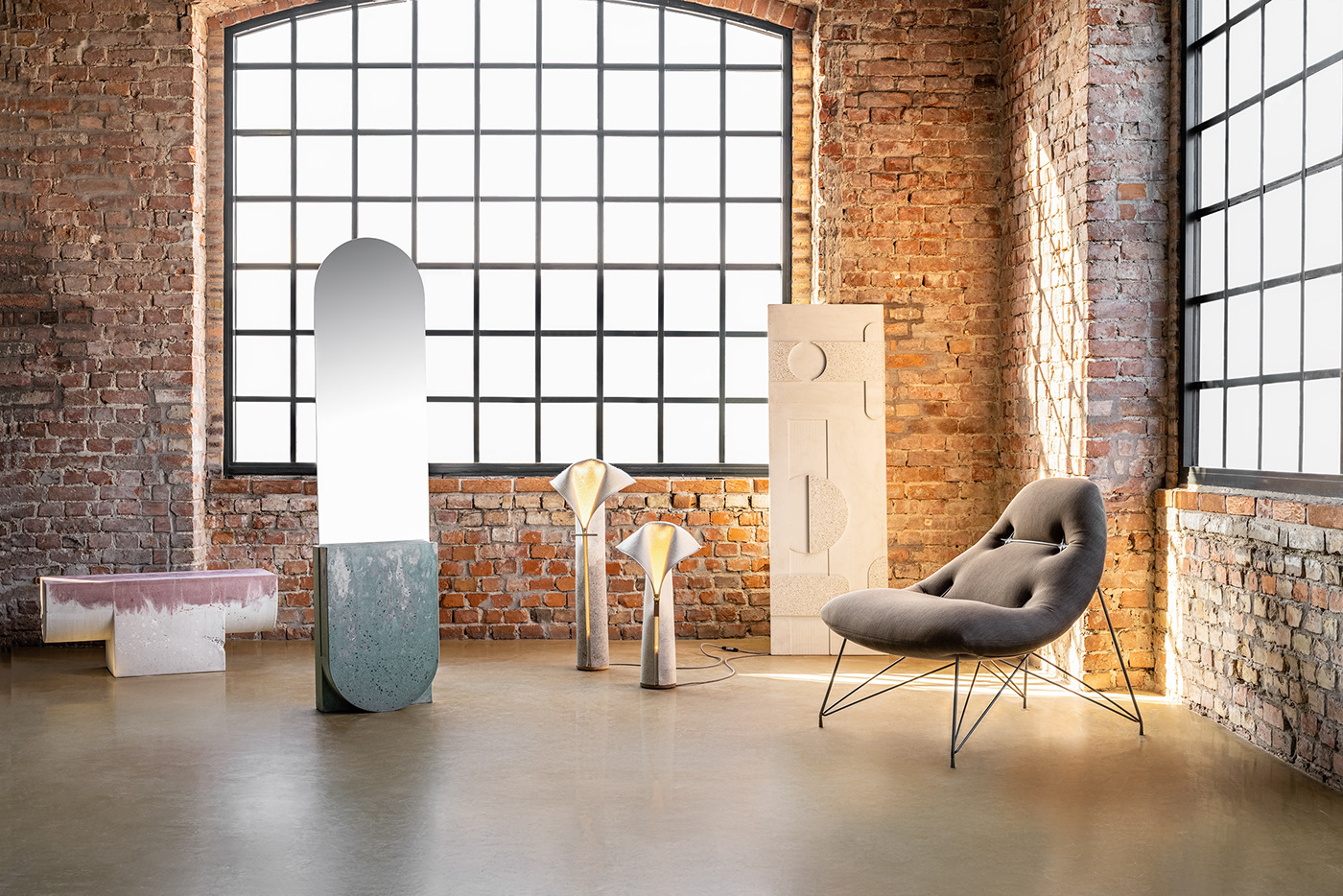
Photo: Kata Balogh, HFDA - Lamps: Márton Budai X Multifelt Factory, Concrete objects: Sara Kele X Anna Cserba X Concrazy
Furniture design and renders: Annabella Hevesi - Line and Round
Development: Annabella Hevesi, Gábor Bella - Line and Round
Upholsterer partner: Kárpitos Partner Group Bt. - Richárd Apró, Kriszta Oláh, Csaba Jónás
Metalwork: IronDesign Kft.
Metal 3D printing: Materialise
Waffle fabric: JAB Anstoetz KG - Climatex
Brown fabric: Kvadrat textile
Leather: ElmoLeather
Oil finish: Rubio Monocoat
Room temperature browning: Rowa Chemicals Kft.
Blasting: Profett Kft.
Metal spinning: BER-TIB Bt.
Photographers: Milán Rácmolnár, Kata Balogh, Annabella Hevesi
Hungarian Fashion & Design Agency
2023

Has been nominated in the "Product of the year" category of EDIDA Hungary
Please, drop a vote HERE




